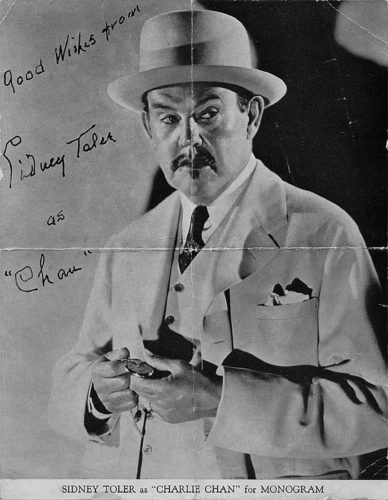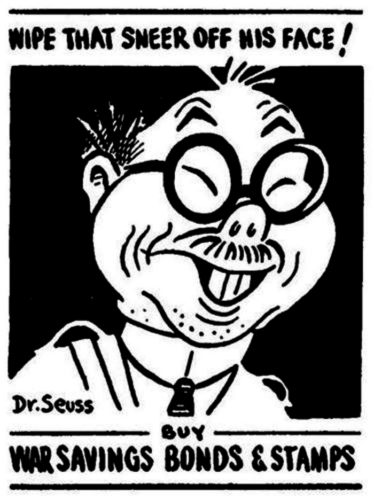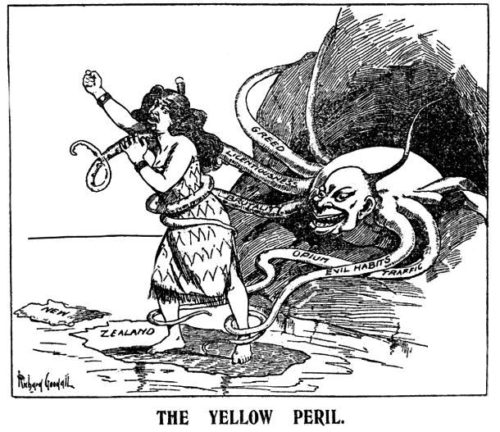
I found myself at the opening night of Charles Francis Chan Jr.’s Exotic Oriental Murder Mystery almost by chance. A couple of nights before, I joked with my theater friend about auditioning for his next production. We both knew it was fairly ridiculous given my clumsy acting, but he played along anyway. With two fingers he held up an imaginary cigar.
“We could do it, babe. I’ll make ya famous.” His voice sank deep and gravelly like a bullfrog. “All we gotta do is change that last name of yours, Liu. How about O’Hara, babe? Crystal O’Hara. Honey, everybody will know your name in a few months, just you wait.”
His impression was spot on. “Wouldn’t it be crazy,” I said, “if the two of us were actually in an old Hollywood movie, with a whole cast of Asian American actors?”
“Well, you know what,” my friend paused, remembering. “There’s a play opening this weekend that I think you might like.”
Lloyd Suh’s CHAN was the Asian American theater anthem I never knew I needed. The play deals with history and activism and the weight of intergenerational legacies, and it offers its difficult subject matter with equal parts compassion and galvanizing anger. It is at once hilarious and deeply moving.
The play follows the lives of 23-year old Berkeley drop-out and aspiring playwright, Charles Francis Chan Jr. (“Frank”), and his artist-activist partner, Kathy Ching. It’s 1967.
Frank and Kathy, revolution-minded, decide to produce a play together. They write a murder mystery, borrowing from Hollywood the deferential Charlie Chan as the detective-turned-antagonist. Suh puts on a play-within-a-play, mixing scenes from Frank and Kathy’s lives with ones from their murder mystery.
CHAN came to Princeton by way of Kathy Zhao, a senior in the English department who proposed the piece for her thesis project in theater. Her production features an almost entirely Asian American cast, which is rare by most standards, and certainly not typical on campus. For Kathy (who shares a name with her character), working on CHAN has been a particularly meaningful and empowering conclusion to her theater career at Princeton.
When she first stepped into a theater class sophomore year, she was one of two people of color. Last fall, Kathy was cast as a “Chinaman” in the Lewis Center production, Zoyka’s Apartment. Her character, Gandzalin, was a cocaine-peddling laundry owner who spoke broken English. “I didn’t understand my confusion and hurt until it coalesced into shame,” she writes. “CHAN is my response to Gandzalin.”
That performance was Kathy’s first time playing yellowface. Yellowface typically refers to white performers depicting people of East Asian descent, but anyone—even an Asian American—who takes on an exaggerated and degradingly racialized role is donning yellowface. The term is not limited to its most literal manifestation, i.e. face paint and gross accents.
Yellowface gained popularity in the early 1900s with characters such as Fu Manchu, the archetypal criminal mastermind, and Charlie Chan, the white-folk-serving Oriental detective. Warner Oland, who played Fu Manchu in its debut in 1929, took on the role of Charlie Chan in 1931 and eventually produced fifteen more Chan films as the lead. Lest we dismiss the two caricatures as outdated and irrelevant, let’s note that the last Hollywood feature starring Fu Manchu (played by Peter Sellers) was released in 1980.
More recent film incarnations include Tilda Swinton as the Ancient One in Doctor Strange, Emma Stone as Allison Ng in Aloha, and Colin Firth as Wei Ling Soo in Woody Allen’s Magic in the Moonlight. On stage, essentialist and Othering roles abound: Rodgers and Hammerstein’s The King and I and South Pacific live on in the musical theater canon, and Puccini’s Madama Butterfly is one of the most popular and frequently performed operas in the world.
In CHAN, yellowface walks on stage ten minutes into the first act. The audience let out a hushed gasp as Charlie Chan, played by Ross Barron ’17, shuffled out in his white suit and matching bowler hat. The detective bowed, and as he turned to deliver his first lines, we could see slanted black lines drawn over his eyes, thickly arched brows, and a preposterous little moustache. When Barron put on a jilted accent, people stiffened audibly.
Seeing yellowface done like this is understandably something of a shock, despite its shameful frequency on screen. Suh lets the bewilderment sink in before his characters address the issue. Kathy and Frank, rehearsing their play a few scenes later, argue heatedly about whether Charlie Chan should be portrayed by Frank’s white draft sergeant in yellowface. “Charlie Chan is a white racist lie,” explains Frank. “Having an Asian American play him would be to legitimize the stereotypes.”
What follows is one of the most effective monologues in the script. Sgt. Fitzwallace (also played by Barron) is prompted by Frank to get into the mindset of his yellowface character (Charlie Chan). He starts hesitatingly at first, listing the physical differences between him and Chan, but then becomes more and more assured, building difference upon difference into a stream of racist Asian stereotypes that culminate in a deadly pronouncement: Orientals are like robots, with no feeling or substance. They don’t value human life, because they aren’t human themselves.
Kathy and Frank watch from the risers as an oblivious Fitzwallace carries on. The audience learns, as we are meant to, what it means for stereotypes to be real.

Last spring, I watched South Pacific for the first time. I was alone, or near to it. Later, my theater friend would explain to me why the musical is so well-loved, but at the time, the applause filling the auditorium felt alien and harsh, the raucous cheering like threats puncturing a peaceful protest. I was shaking in my chair and my hands had gone cold during the show. I was prepared to swear off theater. But I felt just as strongly that I needed to understand what I had seen.
That summer, I began doing research on the portrayal of Asian American women in media, hoping to learn about the history behind the Orientalist representations in South Pacific. Throughout June and July, I watched old films and plays. Madama Butterfly was at the top of my list, along with Flower Drum Song, Sayonara, Memoirs of a Geisha, The Good Earth, The World of Suzie Wong, and Seeking Asian Female. I read film criticism as well, which helped me understand more broadly the political and historical impulses behind what I was watching.
None of it was reassuring—it did not get easier for me to stop feeling the weight of these stereotypes—but I did come to understand and accept my alienation from a whole tradition of American culture that was “about me” but never for me. I asked Peter Kim, who directed CHAN (in addition to being a professional actor and producer), how you can participate in a narrative that excludes you.
“Ultimately, it’s a personal decision,” he says, nodding slowly. “There are certain things that I really have no desire to watch, because it just makes me furious. I watched the pilot of Girls and I wanted to throw my TV out the window. I was really upset—like, you’re going to write a TV show set in Brooklyn in 2012 and there are no people of color at all? There was one scene in a bodega, and they didn’t even cut to the person who was selling them things. The camera just stays on the two girls. I was like, ‘Is this a conscious choice?’ Like you’re really not going to give a moment of screen time to the person—probably a person of color—who is selling you your pack of cigarettes?”
It’s interesting, and a little unsettling, to think about all of the cultural artifacts that were never made with you in mind. CHAN asks you to reflect on this in a subtle but effective way: The play is sprinkled with fun 60s tunes like “Yellow Submarine” and “Chow Mein Sandwich.” What from our past do we remember fondly? What do we forget?
Few people know that terms like “Oriental,” “Chink,” “Gook,” and “Chinaman” were still in use in the 60s. The characters in CHAN regularly refer to themselves as Orientals. There is a moment in the play when Frank, on the cusp of his personal breakthrough, invents the term “Asian American” for himself and his movement. The idea of an Asian American identity, as Suh points out, did not exist fifty years ago. It had to be created, like all languages. And like all liberating, socially conscious languages, it had to fight for acceptance and recognition.
Frank’s inspired moment in CHAN is not the true story behind “Asian American” (the term was actually coined by Yuji Ichioka in 1968, then a student at UC Berkeley who co-founded the Asian American Political Alliance), but reliving the naming of this identity makes you profoundly aware of the historical side of the play. And this history is important—Suh wants his audience to reckon with the past and let it knock up against the present. He challenges us to see that CHAN operates in multiple temporal dimensions.
Frank, for instance, is a fictionalized version of the great playwright, Frank Chin, widely considered to be the father of Asian American theater. Frank Chin grew up with Vaudeville parents; Frank (the character) has a Vaudevillian father whose Charlie Chan minstrel act is a source of shame and confusion. Chin broke barriers in theater and the arts, but he was also a controversial figure. He sought authentic portrayals of Asian Americans above all else, and often tore down other Asian American artists in his single-minded pursuit.
Kathy is based on the historical Kathleen Chang, who later changed her name informally to Kathy Change. Change, whose mother committed suicide when she was just fourteen, was an artist and activist dedicated to the cause of world peace. She and Chin were married for five years, but eventually separated. Change was influenced by the Civil Rights Movement and lived a life of peaceful protest up until her death—in 1996, the activist set herself on fire in one last act of protest on the campus of UPenn.
I can’t help but feel, reading their stories, that Frank and Kathy’s lives were fraught from the very beginning. Suh may rewrite tragedy into tragicomedy, but there is no glossing over the suffering that drives their revolution. As Frank, about to be drafted, wryly notes, “The U.S. has been at war in Asia all our lives.” What do you do with such a fact?
Well, you put on a play, is Frank’s answer. And Suh might agree. CHAN was first produced by the National Asian American Theater Company in 2015. Performed now, the play feels “oddly more dangerous,” Peter tells me. “It is more visceral, this time around.” Post-election, the threat of war no longer seems distant and disconnected from reality. Trump’s immigration bans recall the Chinese Exclusion Act of 1882, which targeted ethnicity for the first time and was not repealed until 1943. When Frank fights to finish producing his play, you get the sense that something real is at stake.

Right before intermission, the actors in CHAN break character and speak directly to the audience. Changshuo Liu ’19, as Monkey (Frank’s gender-bending, space-time-traveling, mythological avatar), asks us all a question: “Who is the greatest Asian American character of all time?” There is a long moment of silence before someone pipes up. Bruce Lee. The actors consider him, but Bruce Lee is an actor, not a character. Another pause, and several more candidates. We finally settle on Aziz Ansari’s character from Parks & Rec. Monkey nods, declaring proudly, “Tom Haverford is the greatest Asian American character of all time!”
During a panel at the Asian American Theater Symposium the next day, several prominent figures in the Asian American theater community continued these sobering reflections on Asian American representation. “There is enormous power in being seen,” asserted Robert Lee, a professor at NYU’s Tisch School of the Arts. “You make a difference just by showing up.” Asian Americans are invisible, he went on to explain, in large part because of the country’s black-white racial dichotomy. Not a person of color and definitely not white, Lee argued that Asian Americans are trapped by the model minority myth. Representation in media, however, means greater visibility, and for Lee, the correlation between visibility and political power is indisputable. Peter agreed, recounting a series of comedy sketches produced by Mr. Miyagi, his theater company. “Just by being six Asian Americans on stage,” he remarked, “it was inherently political.”
As CHAN makes clear, visibility matters not only for the stories of today—it’s also essential for stories from the past. What high school history textbook gives a full account of the history of Asian Americans? Even at the university level, few colleges offer Asian American studies. The result of this absence is near universal ignorance about the history of xenophobia and racism towards Americans of Asian descent. CHAN addresses this problem around the middle of the second act, when Frank and Monkey put on a montage of sorts in order to educate another character on his heritage. Frank projects a series of old political cartoons and black and white photographs. “The Chinese must go,” reads one slide. “JAPS KEEP MOVING,” reads another. “This is A WHITE MAN’S NEIGHBORHOOD.”
It is at the end, however, that the play’s emotional pitch reaches a climax. Frank faces the caricature of Charlie Chan, ready to kill him off along with the rest of the Orientalist stereotypes. As they talk, however, it becomes clear that Chan is not merely the “white racist lie” that Frank wants to destroy. Charlie Chan is also an incarnation of Frank’s father, whom everyone believed had died on the railroad tracks in a drunken stupor. During this emotional father-son interview, Chan recounts the true story of how he was killed.
His story, understood broadly, is a fable about the Chinese laborers who immigrated to the U.S. and died working on the Transcontinental Railroad. Chan talks about his grandfather, whose hands built the tracks that now lay in disuse. Walking along the railroads one day at night, Chan was suddenly overcome with sadness, thinking about the hundreds if not thousands of workers who were likely buried along the road. “I lay down on the tracks and watched the sun set over the Sierras… That, my son, is how I died.”
Chan, given voice through the character of Frank’s father, is humanized; his shame, taken up. Frank hears his story at last, but the resolution in this last scene is more than just about untold stories—it is also about how we reckon with the past, how we make something of the unwanted legacies we’re handed. Frank ultimately chooses a middle path: he must destroy the caricature of Chan but honor his father’s shame nonetheless. The final note of the play sounds towards an ambivalent future.
About a week later, I speak with Peter. I tell him I have so many questions. He tells me this: “The play shifts towards the end of Act II. The worlds are colliding. If you feel uncertainty, that’s why.”